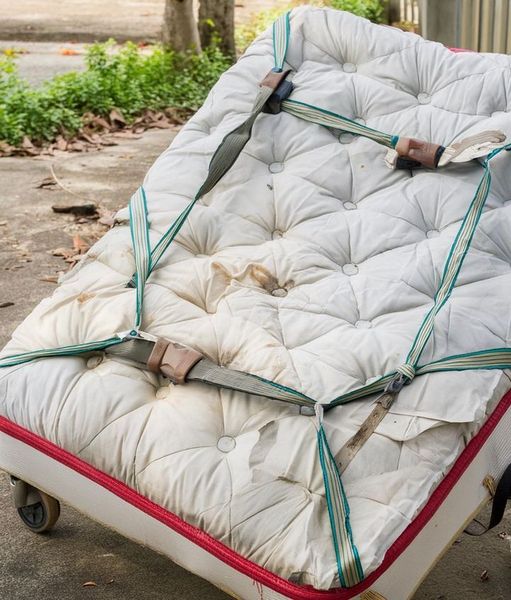Selling a mattress may seem like a straightforward process, but issues can arise after the sale. Recently, a customer who bought a mattress is now requesting a refund, claiming there’s mold on the product. However, as the seller, you may be unsure if this is true. So, what steps should you take to resolve this situation without damaging your reputation or losing a customer?
Step 1: Verify the Mold Claim
The first course of action is to verify the customer’s claim. Politely ask the buyer to send you photos of the alleged mold or offer to inspect the mattress yourself. Mold typically appears as dark spots and is often accompanied by a distinct musty odor. However, it’s essential to differentiate between mold and other forms of staining, such as dust, dirt, or moisture damage that might have occurred after the sale.
If the mattress was sold used, it’s even more critical to ensure the condition it was in when sold aligns with the customer’s current claims. Perhaps they didn’t store the mattress correctly, or environmental factors contributed to the issue. Either way, getting a visual or in-person confirmation can help you move forward with the right resolution.
Step 2: Review Your Return and Refund Policy
Before making any decisions, revisit your business’s return and refund policy. Does it address defects like mold? In some cases, sellers offer returns or refunds within a specific timeframe for issues related to manufacturing defects. However, if the mattress was sold in “as-is” condition, the return policy may not cover these situations.
Make sure you fully understand the terms and conditions before responding to the customer. If your policy includes the option to exchange or refund in the case of defects, then you should proceed accordingly. However, if the mold developed after the sale, the policy may not apply.
Step 3: Investigate Possible Manufacturing Defects
If the mattress was new when sold and mold is confirmed, you may need to consider the possibility of a manufacturing defect. Mold forming soon after purchase could indicate improper manufacturing or storage before the product reached the customer. In this case, it’s a good idea to contact the manufacturer or supplier to report the issue. They may offer a replacement or compensation, which you can pass on to your customer.
For businesses that deal with multiple manufacturers, maintaining a solid relationship with suppliers is crucial in these situations. Manufacturers often have quality control processes in place, but occasionally, something can slip through. If this is the case, it’s essential to address the problem with your supplier to prevent future issues.
Step 4: Maintain Open Communication
Keeping the lines of communication open with the customer is crucial. Let them know that you are investigating the issue and keep them updated throughout the process. If they feel that their concerns are being heard and addressed, they are more likely to remain satisfied with your service, even if the solution doesn’t go exactly as they hoped.
A simple, transparent approach can alleviate frustration on both sides. Customers tend to appreciate it when they are kept in the loop and reassured that you are working toward a resolution.
Step 5: Decide on the Best Resolution
Once you have gathered all the necessary information, it’s time to decide how to resolve the issue. If the mold was present at the time of purchase and your policies cover it, offering a refund or replacement is likely the best option. Not only will this satisfy the customer, but it can also prevent potential negative reviews or further complaints.
On the other hand, if the mold developed due to customer misuse or environmental factors beyond your control, you may need to explain this gently to the buyer. Suggesting ways to prevent mold in the future, such as proper mattress storage or using protective covers, can help the customer understand why this may have happened.
Step 6: Implement Preventive Measures for Future Sales
Finally, to prevent similar issues from occurring, take steps to ensure proper handling and storage of mattresses. Mold thrives in humid and poorly ventilated environments, so make sure your inventory is kept in dry, well-ventilated spaces. Regularly check your stock for any signs of damage or mold before sending products out to customers.
Communicating with your suppliers about maintaining quality standards is another critical step. Ensuring that all mattresses are properly packaged and stored from the manufacturer’s end will reduce the likelihood of defects appearing later.
Additional Considerations for Sellers
Handling customer complaints, especially when they involve potential health risks like mold, can be challenging. However, it’s also an opportunity to show that you stand by the quality of your products and take customer concerns seriously. By addressing issues quickly and thoroughly, you can turn a negative experience into a positive one and maintain trust with your buyers.
It’s also important to be prepared for various scenarios. For instance, what if the customer demands a refund but refuses to return the mattress for inspection? Or what if they exaggerate the issue in an attempt to get their money back? These are tricky situations that require a balance of customer service and business acumen.
Ultimately, always make decisions that align with your business values and policies, but don’t forget the power of compromise and goodwill. Whether you decide to offer a full refund, an exchange, or store credit, handling the matter with professionalism can prevent conflicts and safeguard your reputation.

